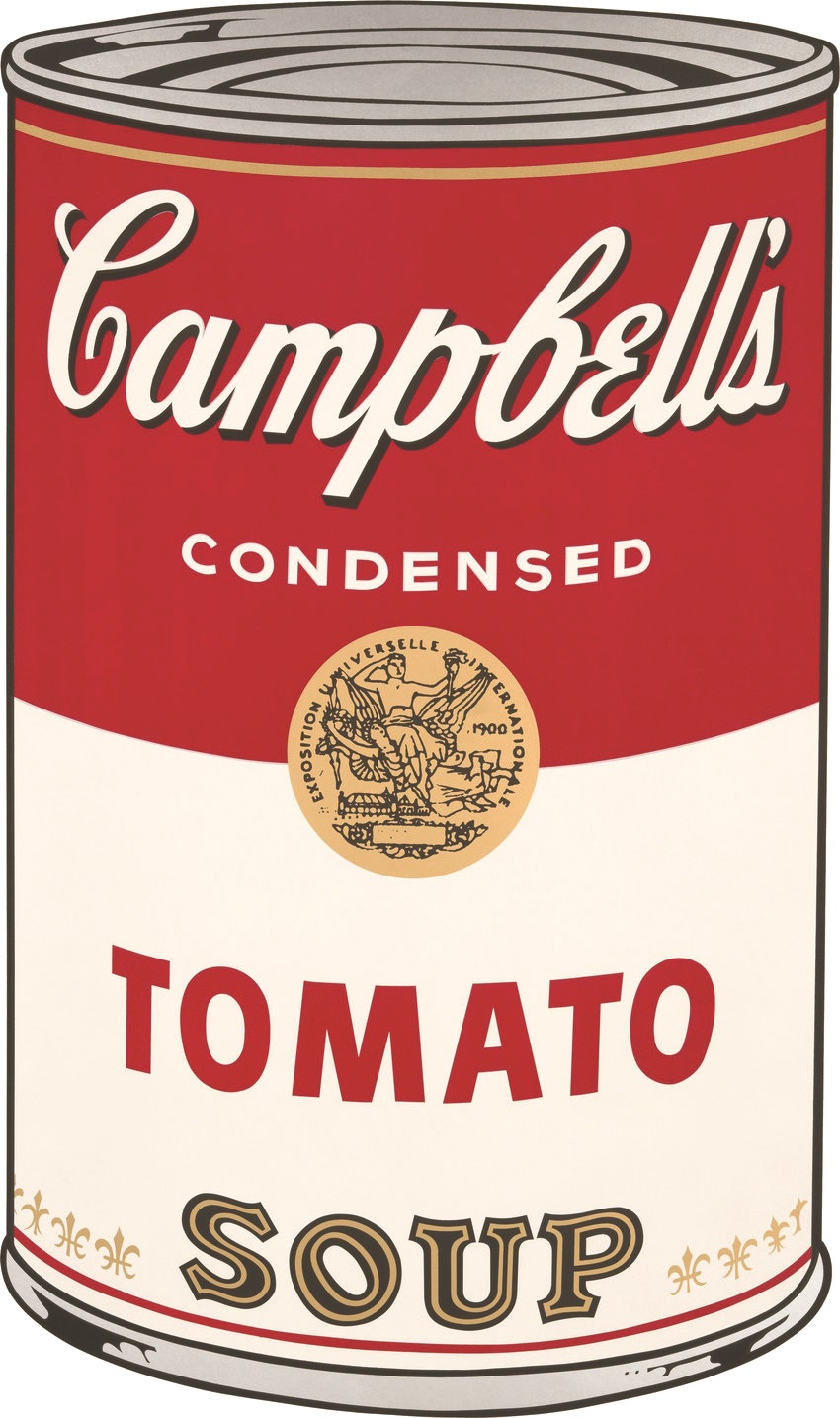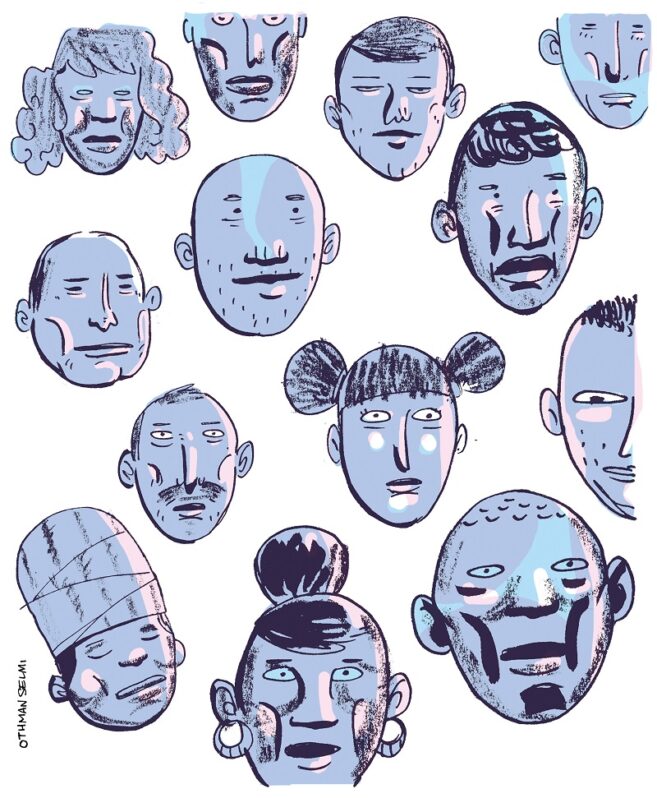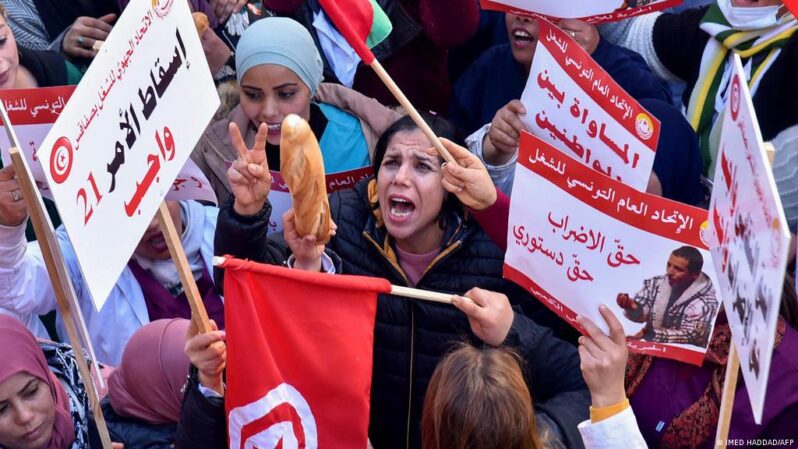Interprofessional Associations in Tunisia’s Food Industry: A Tool of the Manufacturers’ Cartels

In 1982, while Ronald Reagan and Margaret Thatcher were hammering one nail after another into the coffin of Keynesian economics and the welfare state and declaring that the world had entered the neoliberal era, University of Chicago professor George Stigler received the Nobel Memorial Prize in Economic Sciences.[1] Stigler’s most notable scientific contribution was “regulation theory”, which showed that the state’s regulatory role serves not public interest, as commonly believed, but the established manufacturers in a given field who seek to exclude any new competitors.[2] With this article, he established – without using the term himself[3] – the theory of regulatory capture, which became popular not only in economics but also political science, law, public administration, and other scientific fields. This theory studies the deviation of legislative and executive bodies toward serving the private interests of a particular group instead of public interest, and it is being used to explain not only the crisis of democracy but also the 2008 financial crisis and even the escalating environmental crisis.[4] The theory is not rooted only in the works of Stigler and the liberal Chicago school of economics; rather, it also accords with the Marxist critique of the state and its institutions as serving the interests of the bourgeoisie.[5] Hence, the right and left converge on this theory, although their conclusions differ: one seeks to abolish the state’s regulatory role beyond protecting free competition, while the other wants to bolster it and orient it toward public interest and the rights of society.
The popularity of the regulatory capture theory prompted most developed countries to search for legal solutions to fortify their regulatory bodies, especially in the economic areas most vulnerable to it, against penetration and exploitation by people with vested interests. As for Tunisia, although the legislature attempted to combat conflicts of interest in Law no. 46 of 2018, there is still little concern about protecting the state’s regulatory role. Economic cartels’ regulatory capture is not simply a situation that legal norm is unable to combat; rather, sometimes it appears to be codified in law. This is the case in one of the most important – and most centralized in the hands of a few large companies – economic sectors, namely the food industry. The law vests regulatory powers in interprofessional associations, which are hybrid bodies that mix public with private and unite representatives of farmers, manufacturers, and the administration. However, rather than correcting the imbalance between links in the supply chain, as in the original French model, they appear to be a tool for the manufacturers’ cartels to fortify their positions and increase their profits. The president of the Tunisian Canned Food Industries Group (GICA) is Samir Majoul, one of the biggest canned tomato manufacturers and the president of the employers’ union. Likewise, the Interprofessional Red Meat and Milk Group is headed by a representative of Delice, a company that dominates the milk products and derivatives market. The same goes for the Tunisian Poultry and Rabbit Association (GIPAC), whose presidency is always controlled by the three manufacturers that dominate the poultry products market.
Mixing Public and Private: In Whose Interest?
Interprofessional associations in Tunisia date back to 1965, when the GICA was established. Over the next two decades, the experience was replicated with other products in the agriculture and food industry sector. Then came Law no. 84 of 1993, which standardized the associations’ legal framework. Its first article defines interprofessional associations as “legal persons of public economic interest that possess civil personality and financial autonomy”. The article adds that the associations’ membership and services are open to agricultural producers, processors, and agricultural and food product exporters, whether natural or legal persons.
Hence, the hybrid nature of these entities has been evident since their definition. They represent everyone involved in a particular sector, the vast majority of whom are private, yet they are also supposed to serve a “public economic interest”. They differ, for example, from an “economic interest group”, which is regulated by the Commercial Companies Code, is subject to freedom of membership, and serves its members’ private interests. Likewise, they differ from the National Olive Oil Office, which is defined by the decree that established it as “a public interprofessional institution with an industrial and commercial character”.[6] This institution represents only the state, which monopolizes its board’s composition.
The mixing of public and private within the interprofessional associations is reflected in the composition of their boards. These boards include not only representatives of the professional organizations and associations for farmers, processors, and exporters (as in France and most comparable French-inspired experiences), but also representatives of the administration. The 1993 law allocated the governmental party one quarter of the seats. The 2005 amendment then returned the figure to one third, which is approximately where it stood in the separate laws that originally governed the associations.[7] The administration’s representatives do not necessarily constitute a homogeneous bloc as they come from four ministries – namely agriculture, commerce, finance, and industry – each represented by one member. As for the other two thirds, they are divided evenly between the Tunisian Union of Agriculture and Fisheries (UTAP), which represents producers, and the Tunisian Confederation of Industry, Trade, and Handicrafts (UTICA), which represents processors, distributors, and exporters (depending on the association and product). The board selects a president from among its members via a majority vote. In reality, there seems to be an implicit rule that restricts the presidency of food industry associations to the processors, i.e. manufacturers. After consulting the minister of agriculture, the board also appoints a general director who handles day-to-day management. This figure usually represents the association in the media as the presidents avoid appearing in the picture. In fact, only one association’s website even names its president.[8]
While the presence of private entities in the interprofessional associations may be expected, most offices [dawawin] – i.e. public bodies with broad regulatory powers, including monopolizing the import of certain products – also feature a hybrid composition. For example, the law governing the Tunisian Office of Trade allocates seven of 12 seats to “professionals”, thus giving the companies dominating certain sectors a direct channel for protecting their privileges.
The public nature of the interprofessional associations is also evident from their funding. The 1993 law allows them to access tax resources. Since the Finance Law of 1995, these taxes, which concern the agro-food products that fall into the domain of each association, pass through the Development Fund for Competitivity in the Agricultural and Fishing Sectors (FODECAP). While the public funding of interprofessional associations may be a logical consequence of their classification as public economic interest bodies, it is not unique to Tunisia. Rather, it also occurs in several other countries, including countries that deem interprofessional associations “private entities” in nature or composition such as South Africa and even the United States.[9] Although the mixing of public with private is most extreme in Tunisia, where it encompasses the associations’ legal nature and composition, it also exists to a lesser extent in a number of comparable experiences, even the most liberal ones.
From Dialogue, Representation, and Development to Regulation
The degree to which the public aspect is present in interprofessional associations also affects the powers granted to them. In Tunisia, these powers have transformed the associations from bodies that merely coordinate among the various links of a product’s supply chain and talk with the public authorities into regulatory actors. Although the interprofessional associations experience differs from country to country and even within the one country based on the product in question, the functions vested in them seldom resemble those of a public authority. In a comparative study of interprofessional associations, UN Food and Agriculture Organization (FOA) experts classified their functions into six major categories.[10] The first and most important is defending the sector’s interests, representing it before the government, fostering business negotiations between its links, and reducing the imbalance between them. The other functions are improving product quality, providing training courses to professionals (e.g. on new technologies), collecting and providing information about the product’s market, solving logistical issues, and conducting or funding research to develop the sector.
Most of these functions are found in Tunisia’s law regulating interprofessional associations. However, the law adds two vague functions through which a regulatory role seeps in, namely “contributing to balancing the market using the various appropriate mechanisms” and “contributing to the promotion of export”. In both instances, the law adds the phrase “in cooperation and coordination with the professional and administrative bodies concerned” without clarifying the latitude for the interprofessional associations to intervene or their decision-making authority. In fact, that phrasing of the functions was more detailed in the original law, before its amendment in 2005. They included “intervening when necessary to avert an imbalance between supply and demand” and “undertaking any operation to build up stocks to ensure supply and store production surplus”. As for the associations’ power to intervene in export, it is detailed – in relation to the dates sector – in the decision on date season that the minister of economy issued on 18 January 1988. This decision, which vests the minister with the powers to issue date-export and date-collection licenses and to set minimum prices, stipulates in each instance that the interprofessional association must be consulted. The need to consult suggests that the association’s opinion does not always conform with the minister’s. But the decision requires the invoices of all exports to be endorsed by the association, thus allowing the exporters present and represented therein to exclude any new competition. A report by the Organisation for Economic Co-operation and Development (OECD) assessing the impact on competition stresses that the power to form strategic stockpiles to balance the market and the power to control exports conflict with the nature of interprofessional associations and can restrict free competition in favor of the companies represented in the association.[11] As shown by Stigler in his authoritative article, when influencing regulatory policies in a given sector, economic actors are less concerned with obtaining specific concessions or even direct grants than they are with excluding new competitors.
Finally, a significant portion of the associations’ powers are limited to consultation and making proposals, with the decision being issued by the ministry. This leaves open the question of the extent to which the state actually intervenes to limit large companies’ regulatory capture. The vagueness of the associations’ powers and involvement in regulation, as well as the unclear relationship between their powers and the administration’s powers, allows their role to deviate toward severing their most powerful party. In the original French model, interprofessional associations issue not decisions but interprofessional agreements only binding on their members. However, if the agreements are adopted by consensus within the association, i.e. with the consent of the representatives of all links in the supply chain, the state can make them binding even on non-members.[12] As for Tunisia, while a report by the World Bank – which is always wary of any state presence – considers the interprofessional associations “an arm of the administration”,[13] they are actually an arm shared by the administration and manufacturers at the expense of the farmers.
Poor Organization Among Farmers: The Root Problem?
Historically, the main goal of introducing interprofessional associations in France and then other European countries was to protect the interests of the weakest link in the agro-food product supply chain, i.e. farmers. Agricultural producers are always more numerous and less organized than processors, distributors, and exporters. In theory, interprofessional associations provide an opportunity for farmers to deal with the other links on equal footing and hence reduce, by force of law, the imbalance in economic relations. But this is not so in Tunisia. For example, a few years ago in the date sector – which, like or perhaps even more so than the other agricultural sectors, sees farmers exploited by the other links – farmers opposed a plan to establish an interprofessional association and demanded a public date office instead. The original interprofessional association for dates was dissolved in 2002, with the association for fruit assuming its purview. In the end, the opposing view prevailed. An interprofessional association for dates was reestablished in 2018 after farmers were promised that the association’s presidency would alternate between them and the exporters, who would have the first term.
The farmers’ preference for a purely public body in the form of an office over an interprofessional association wherein they are directly represented by one third of the board reveals the principal flaw that has characterized Tunisia’s interprofessional associations experience: poor organization among farmers. While an imbalance between farmers and the other economic actors is virtually ubiquitous, in many countries it prompted farmers to organize in a manner that allows them to influence public policy and shift the scales to a certain extent. But UTAP, which continues to monopolize farmers’ representation within the interprofessional associations even though a competing farmers’ syndicate was established after the revolution, could not be more averse to performing this role.
Since its inception, UTAP has been organically linked to the authority and blessed all its policies. It was established in 1955 to compete with the General Union for Tunisian Agriculture, whose leaders mostly aligned with Salah ben Youssef in his conflict with Habib Bourguiba. After the latter prevailed, the authority made UTAP the sole representative of farmers. While the major national organizations’ connection to the authority has been the norm since independence, rarely has the relationship been as one-directional as in the case of UTAP. The post-independence state’s major economic choices were made at the expense of small farmers, whether in the implementation of the cooperatives experiment of the 1960s or – in particular – in the policy of encouraging foreign investment that has continued since the 1970s. This policy forced the preservation of low wages, which puts pressure on the cost of living, i.e. on the prices of basic goods that derive from agriculture to begin with.
The situation changed little after the revolution. In the 2013 conference, Ennahda Shura Council member Abdelmajid Ezzar became president of UTAP. The establishment of the Tunisian Farmers’ Syndicate made little difference because the state still does not recognize union pluralism. Moreover, the state entrenches UTAP’s control over farmers via clientelist relationships, with most applications for grants, loans, supplies, and professional licenses going through its channels.[14] The Tunisian Farmers’ Syndicate itself is also witnessing divisions that have helped prevent it from achieving broad representation.
The farmers of the village Ouled Jaballah may have hit the nail on the head with their uprising against fodder prices.[15] Their slogans simultaneously targeted the three corporations dominating the fodder sector and UTAP, which they deemed to be complicit and to ignore the rights and interests of small farmers.
If the interprofessional associations’ experience in Tunisia is a distorted copy of the French original, then the reason is not just their hybrid composition and involvement in regulation (which virtually epitomize the theory of regulatory capture) but also their transformation into a tool serving manufacturers’ interests, contrary to their historical goal. This is primarily due to poor organization among farmers and the passivity of the institution that is supposed to defend them. In a study by the French Foreign Ministry about the viability of transferring the interprofessional association experience to developing countries, experts stressed that farmers must first organize and form a political force.[16] Otherwise, these associations could turn into a tool for the last links in the supply chain to control producers.
Manufacturers and exporters may not need an interprofessional association to organize into a cartel. However, the state is bestowing legal and institutional legitimacy on their cartels and helping them tighten their grip over their sectors in relation to both their competitors and the other links in the supply chain. Hence, the key question is not necessarily whether the state should intervene, for even the most neoliberal policies require state intervention. Rather, the question is, for whose interest is the state intervening?
This article is an edited translation from Arabic.



